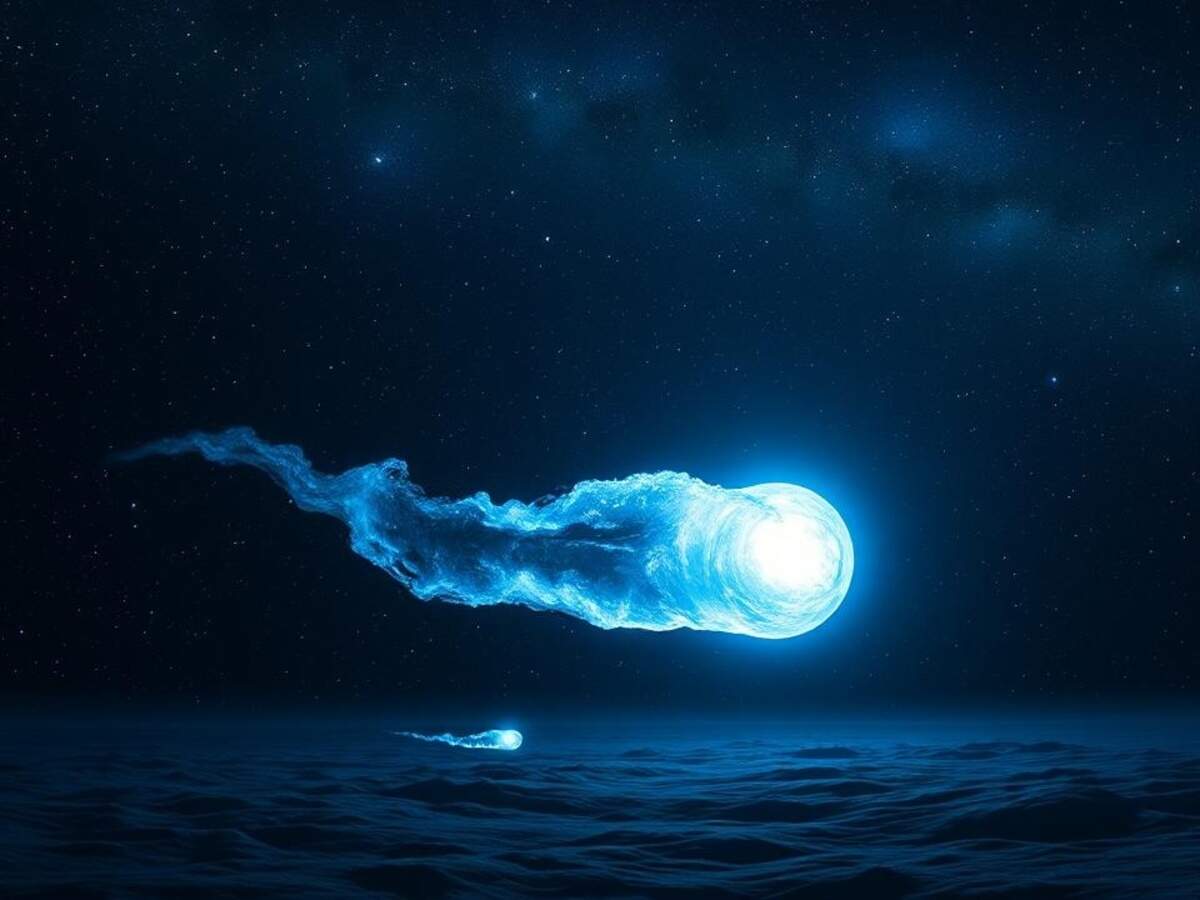Science
NASA Detects Water’s Chemical Fingerprint on Interstellar Comet

In a significant advancement for planetary science, NASA has confirmed the detection of water’s chemical fingerprint on the interstellar comet 3I/ATLAS. This discovery could transform our understanding of comet evolution and the potential for life in distant planetary systems. The confirmation was made using instruments from the Neil Gehrels Swift Observatory, marking a historic moment in the study of celestial bodies from beyond our Solar System.
Understanding 3I/ATLAS
Discovered on July 1, 2025, by the Asteroid Terrestrial-impact Last Alert System (ATLAS) in Hawaii, comet 3I/ATLAS is only the third known interstellar object detected, following 1I/‘Oumuamua in 2017 and 2I/Borisov in 2019. Unlike typical comets that orbit the Sun, this one follows a hyperbolic trajectory, indicating it originated from another star system and will soon exit ours permanently. With an estimated age of over seven billion years, 3I/ATLAS is potentially the oldest comet ever observed, offering a rare chance to study the chemical signatures from another planetary system.
The Breakthrough Discovery
Astronomers utilized the Swift Observatory to detect a faint ultraviolet signal from the comet, attributed to hydroxyl (OH) gas. This gas is produced when sunlight breaks apart water molecules, marking the first chemical evidence of water activity on an interstellar comet at such a great distance from the Sun. As noted by lead researcher Dr. Zexi Xing, “Every interstellar comet so far has been a surprise.” The findings were published in a study that promises to influence future models of cometary evolution and planetary formation across the galaxy.
The significance of detecting water, even indirectly, on 3I/ATLAS lies in its implications for planet-forming systems beyond our Solar System. According to co-author Prof. Dennis Bodewits, “Each interstellar comet we’ve observed has rewritten the rules.” The previous comets, such as ‘Oumuamua, were found to be dry, while Borisov was rich in carbon monoxide. The discovery of water on 3I/ATLAS suggests a more complex chemical landscape in distant systems.
Water is not only vital for life as we know it, but it also plays a crucial role in the early processes of planetary formation. When ice and dust grains accumulate around young stars, they form the foundational elements of planets. The presence of hydroxyl gas at nearly three times the distance of Earth from the Sun indicates that interstellar comets could be preserving water ice from ancient star systems, possibly older than our own.
Scientists observed that the comet loses water at an estimated rate of around 40 kilograms per second, despite being located far beyond the typical range where solar heat would cause water ice to vaporize. This unusual activity suggests that small icy particles may have detached from the comet’s surface, heated by sunlight to produce the detected ultraviolet emissions. “3I/ATLAS’s behaviour defies our models,” remarked Prof. Bodewits. “It indicates there are physical and chemical processes at play that we’re only beginning to understand.”
The presence of hydroxyl gas strengthens the hypothesis that organic chemistry is widespread throughout the galaxy. As Prof. Bodewits explained, “When we detect water or its fragments from an interstellar comet, we’re essentially reading a note from another planetary system. It tells us that the building blocks of life’s chemistry travel freely between stars.”
As 3I/ATLAS fades from view, it is expected to become observable again after mid-November 2025, providing another opportunity for researchers to track its chemical activity as it approaches the Sun. NASA’s detection offers a rare glimpse into the diversity of comets in our universe and suggests that the chemistry essential for life may be more common than previously thought.
-

 World5 months ago
World5 months agoSBI Announces QIP Floor Price at ₹811.05 Per Share
-

 Lifestyle5 months ago
Lifestyle5 months agoCept Unveils ₹3.1 Crore Urban Mobility Plan for Sustainable Growth
-

 Science4 months ago
Science4 months agoNew Blood Group Discovered in South Indian Woman at Rotary Centre
-

 World5 months ago
World5 months agoTorrential Rains Cause Flash Flooding in New York and New Jersey
-

 Top Stories5 months ago
Top Stories5 months agoKonkani Cultural Organisation to Host Pearl Jubilee in Abu Dhabi
-

 Sports4 months ago
Sports4 months agoBroad Advocates for Bowling Change Ahead of Final Test Against India
-

 Science5 months ago
Science5 months agoNothing Headphone 1 Review: A Bold Contender in Audio Design
-

 Top Stories5 months ago
Top Stories5 months agoAir India Crash Investigation Highlights Boeing Fuel Switch Concerns
-

 Business5 months ago
Business5 months agoIndian Stock Market Rebounds: Sensex and Nifty Rise After Four-Day Decline
-

 Sports4 months ago
Sports4 months agoCristian Totti Retires at 19: Pressure of Fame Takes Toll
-

 Politics5 months ago
Politics5 months agoAbandoned Doberman Finds New Home After Journey to Prague
-

 Top Stories5 months ago
Top Stories5 months agoPatna Bank Manager Abhishek Varun Found Dead in Well









